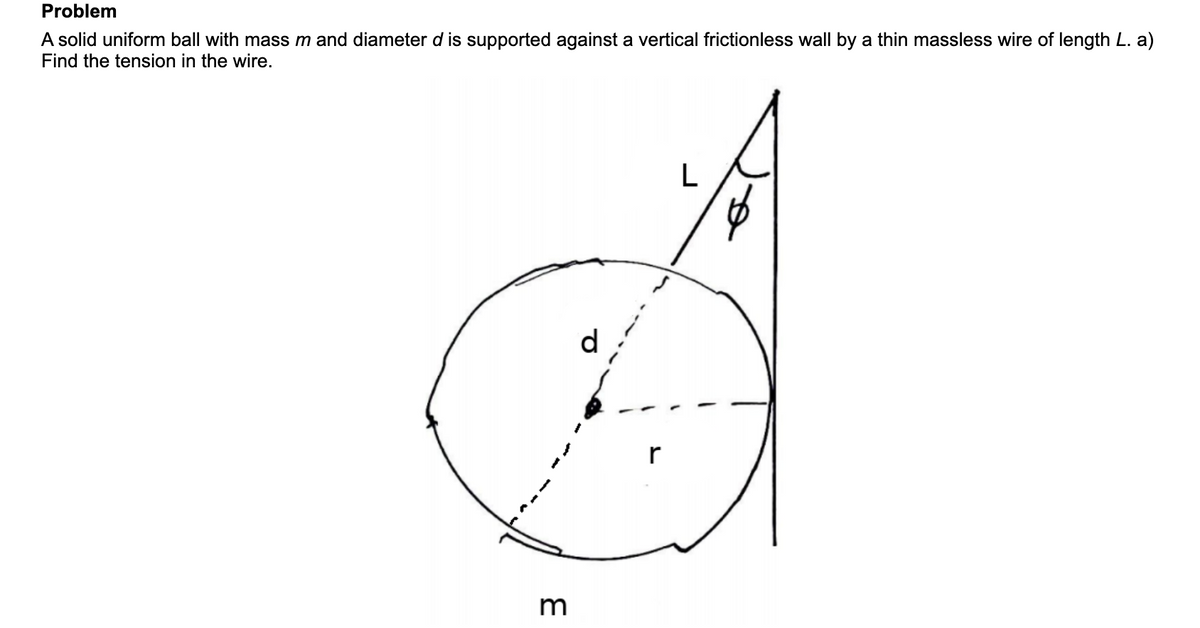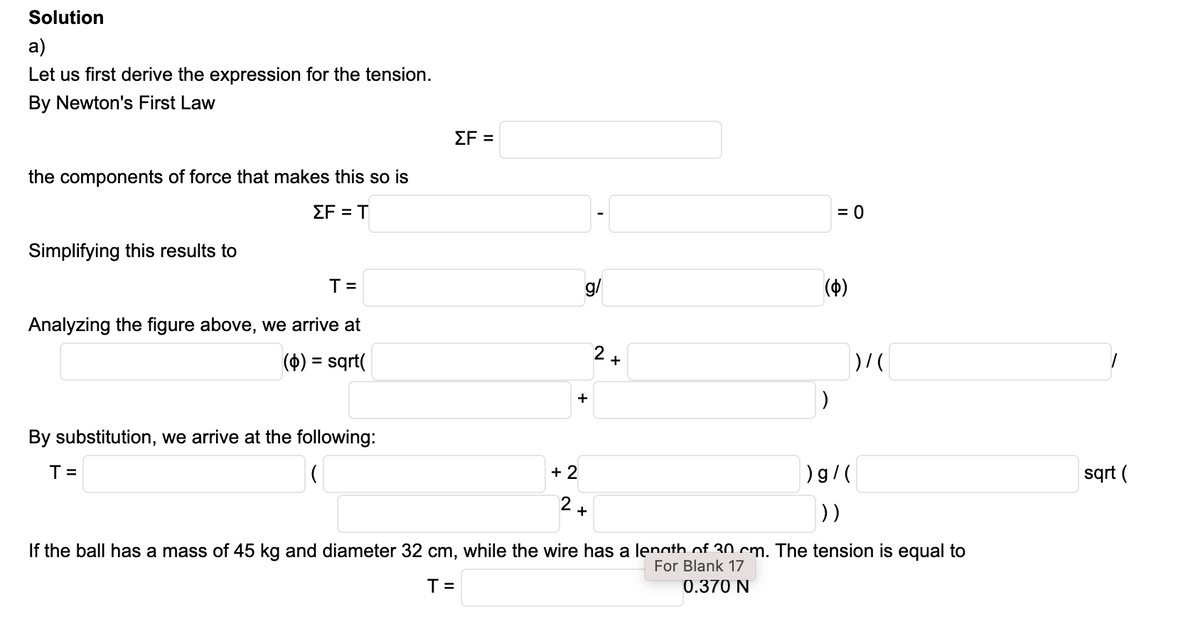Problem A solid uniform ball with mass m and diameter d is supported against a vertical frictionless wall by a thin massless wire of length L. a) Find the tension in the wire. r
Problem A solid uniform ball with mass m and diameter d is supported against a vertical frictionless wall by a thin massless wire of length L. a) Find the tension in the wire. r
International Edition---engineering Mechanics: Statics, 4th Edition
4th Edition
ISBN:9781305501607
Author:Andrew Pytel And Jaan Kiusalaas
Publisher:Andrew Pytel And Jaan Kiusalaas
Chapter6: Beams And Cables
Section: Chapter Questions
Problem 6.78P: The chain OA is 25 ft long and weighs 5 lb/ft. Find the maximum force in the chain and the distance...
Related questions
Question
Please show your solution and at the same time BOX and SPECIFY the answers that corresponds to each blank on the question. Make sure to fill all the blanks. Thank you.
STRICKLY FOLLOW THIS:
Calculated Answers
Express your answers without rounding off and without scientific notation unless instructed otherwise.
Multiple Blanks
Write powers or subscript as is. Ex: Use b2 if you mean b2 or b2
Spell out Greek letters. Ex: Use pi if you mean greek letter pi
Write answers without spaces. Ex: Use 2epsilon0r3 if you mean 3e0r3
Write fractions with a slash. Ex: Use 1/2

Transcribed Image Text:Problem
A solid uniform ball with mass m and diameter d is supported against a vertical frictionless wall by a thin massless wire of length L. a)
Find the tension in the wire.
L
r
m

Transcribed Image Text:Solution
а)
Let us first derive the expression for the tension.
By Newton's First Law
ΣF
the components of force that makes this so is
ΣFT
= 0
Simplifying this results to
T=
g/
(4)
Analyzing the figure above, we arrive at
(4)
sqt(
2+
%3D
+
By substitution, we arrive at the following:
T =
+ 2
)g/(
sqrt (
))
+
If the ball has a mass of 45 kg and diameter 32 cm, while the wire has a lenath of 30 cm. The tension is equal to
For Blank 17
0.370 N
T =
Expert Solution
This question has been solved!
Explore an expertly crafted, step-by-step solution for a thorough understanding of key concepts.
Step by step
Solved in 2 steps with 2 images

Recommended textbooks for you

International Edition---engineering Mechanics: St…
Mechanical Engineering
ISBN:
9781305501607
Author:
Andrew Pytel And Jaan Kiusalaas
Publisher:
CENGAGE L

International Edition---engineering Mechanics: St…
Mechanical Engineering
ISBN:
9781305501607
Author:
Andrew Pytel And Jaan Kiusalaas
Publisher:
CENGAGE L